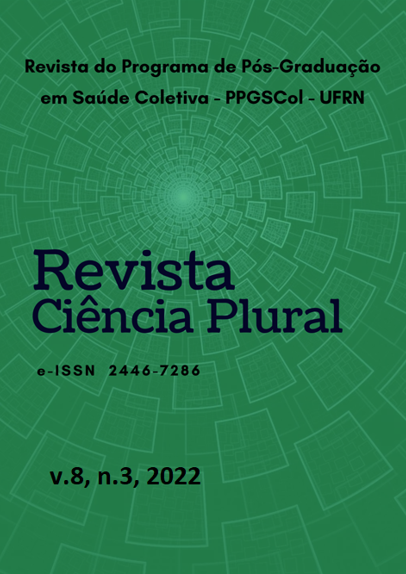Analysis of suicide mortality in the state of Pernambuco
DOI:
https://doi.org/10.21680/2446-7286.2022v8n3ID26478Abstract
Introduction: Suicide is characterized as a conscious act of cessation of one's own life, being a public health problem. Objective: To analyze suicide mortality in the state of Pernambuco, from 2010 to 2019. Methodology: This is a descriptive and ecological study, with a quantitative approach. Secondary data available from the Mortality Information System and the Brazilian Institute of Geography and Statistics were used. The study calculated the Suicide Mortality Rate and considered the following variables: year of death, geographic location, gender, age group and race/color. Data processing and analysis took place with the help of Excel spreadsheets and SIG QGIS 3.16 software, using absolute and relative frequency measures and presented in tables, figures and thematic map. Results: In recent years, Pernambuco has shown an increasing trend in suicide mortality, with the prevalence in the male population (77,33%), in the age group from 20 to 39 years old (40,95%) and in the black population standing out (79,26%). Regarding the geographical distribution of the average rates, the state showed differences, highlighting Health Region IX (Serra Talhada), followed by Health Region V (Garanhuns), Health Region VII (Salgueiro) and Health Region IX (Oricuri). Conclusions: The analysis of suicide mortality was important for the construction of the victims' profile, enabling the identification of vulnerable groups and directing interventions. In addition, the importance of implementing and improving public policies aimed at suicide prevention is highlighted.
Downloads
Downloads
Published
How to Cite
Issue
Section
License
Copyright (c) 2022 Revista Ciência Plural

This work is licensed under a Creative Commons Attribution-NonCommercial-ShareAlike 4.0 International License.
À Revista Ciência Plural ficam reservados os direitos autorais referente a todos os artigos publicados.

 Português (Brasil)
Português (Brasil) English
English Español (España)
Español (España)













